Tablate is on the way to Lanjaron…South of Granada, just off the motorway.
You may have seen a road sign saying ´Ruta Pintoresca´ as you head towards the Alpujarra.
As you drive from the motorway exit and take the road to the Alpujarra, (signs for Lanjaron) you cross the steel bridge over the Tablate gorge. In 1990 the Steel bridge was built. It is 200 metres long and 25 metres high.
Although this bridge is modern. This strategic location holds lots of stories and history.
To get from the city of Granada to the Alpujarra region it is the only way. The deep gorge below has to be crossed to reach the villages beyond. The Gateway to the Alpujarra is the Tablate Bridge. Over the centuries this site has been the key location in many battles.
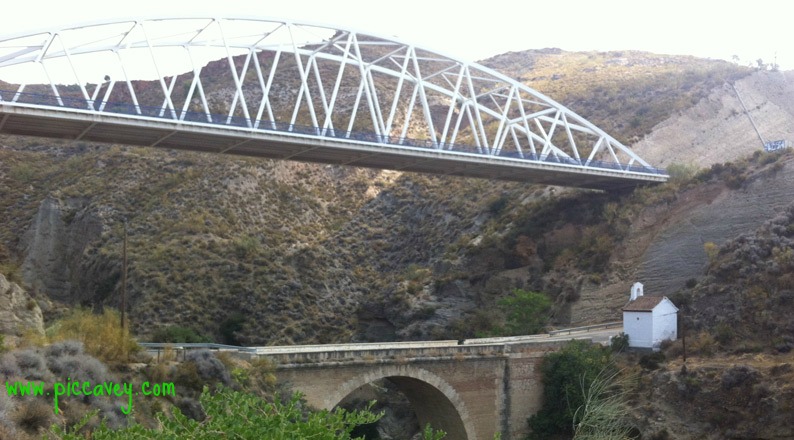
The Gateway to the Alpujarra
When we read about the Alpujarra wars the bridge features in many tales throughout the centuries.
Many different bridges built and destroyed over the centuries. Even the Poet Pedro Antonio de Alarcón wrote about this spot after his 1872 visit.
“Quemados unos, volados otros, y todos cubiertos de sangre de fenicios, cartagineses, romanos, godos, árabes, moriscos, austríacos o franceses, y, por supuesto, de españoles de todos los siglos”.
¨Some burnt, some blown up and all were covered in blood of the Phoenicians, Carthaginians, Romans, Arabic, Godos, French, Austrian and of course Spanish too¨
Tablate Bridge
There are four bridges visible over this gorge today. The most modern one is new steel one. This connects the motorway with the road to Lanjaron and the Alpujarra villages. Then there is the ´new bridge´ next to the Hermitage. You can also drive or walk along this one and the oldest bridge one, from beginning of the 16th century. You can walk across it but it is no longer part of the road.
Further down a fourth bridge is visible. This red metallic bridge is part of the motorway going down to the coast.
Today we can see the twin bridges parallel to each other. The old bridge or Puente de Tablate is not very long and clearly made from the rough materials of the time.
Toll at the Bridge
To cover the reconstruction costs at one point the Catholic Kings set up a toll to cross the bridge. This lasted for three years. From 1500 til 1503. Every animal and person who crossed had to pay 1 maravedi (currency at that time).
Tablate Hermitage
On the bridge to one side is the Hermitage Virgen de las Angustias. This tiny chapel was built in the in 19th century. Used by travellers passing through and even today there are flowers inside. Beyond the Hermitage is the Inn or Venta which once would have been busy with travellers and carriages. Is now unused and actually is up for sale.
The most important time in the history of the bridge was in 1569. After the Catholic kings has conquered the city of Granada the Morisco rebelled. The Muslims which fled from Granada moved south.
They hid in Lecrin Valley and Alpujarra region. Tablate was an important strategic location in their defense from the Catholic troops.
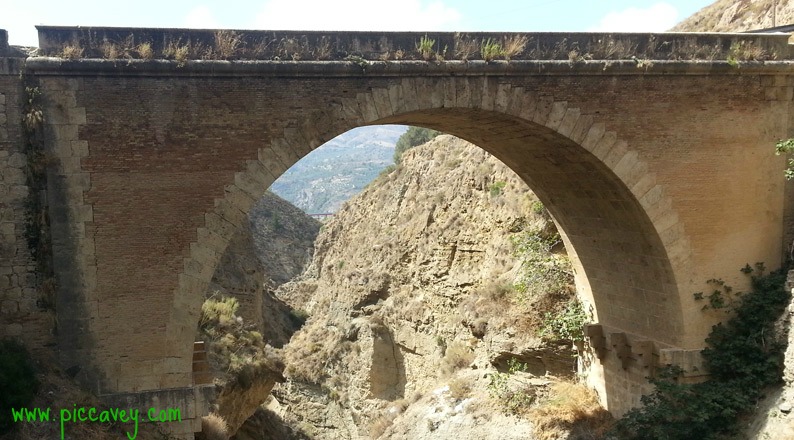
Rock passage in Tablate
According to the chronicles of Diego Hurtado de Mendoza. Just past the Hermitage along a narrow corridor between the rock on a key battle in the Alpujarra Wars was fought. The date was 10th January 1569
Christian troops commanded by the Marques of Mondujar attacked the 3500 moors that were defending their leader Aben Humeya. The Christian troops were 2000 men with 400 horses. The moors had destroyed the bridge and were hiding in this narrow passage. Protected from the Christians troops couldn’t reach them over the deep gorge.
However a Franciscan Monk named Cristóbal Molina who was with the troops took a few steps towards the broken bridge. With a cross in one hand, a sword in the other hand crept over the remaining wood and leapt across the gorge, lading safely on the other side. A soldier followed him but fell to his death down the deep gorge. Another soldier tried and luckily got to the other side.
With the friar and the soldier they took rocks and wood and rebuilt the bridge protected by the musketeers firing at the opposition troops. Once the bridge was ready the horses and artillery crossed safety and set up in the village of Tablate.
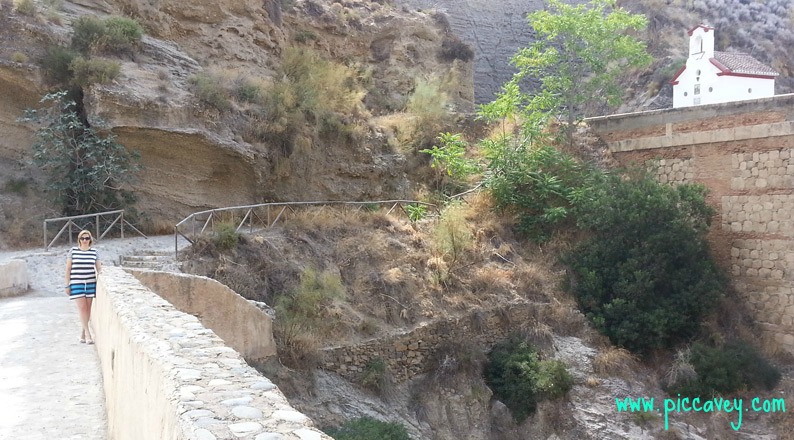
Village of Tablate
The village of Tablate which was located close to this bridge is no longer. However there are still a few reminders of the history of this place. It was inhabited until 1960´s. The last occupant a shepherd was there until 1990. Many of the families were Galician descendants which repopulated these regions in the late 1800´s Families such as los Abarca, Aporta, Fernández or Gómez.
Currently in the village you can a brick made bakers oven and the remains of cobbled streets. The ruined church, Iglesia de Santiago dates back to 16th century, it was rebuilt around 1605. The defense tower (and defense walls) dating to 16th century would have been the lookout to defend the bridge from Felipe II in the Alpujarra Wars.
If you are interested in learning more about this part of Granada you may enjoy the Historic Novel: The Hand of Fatima
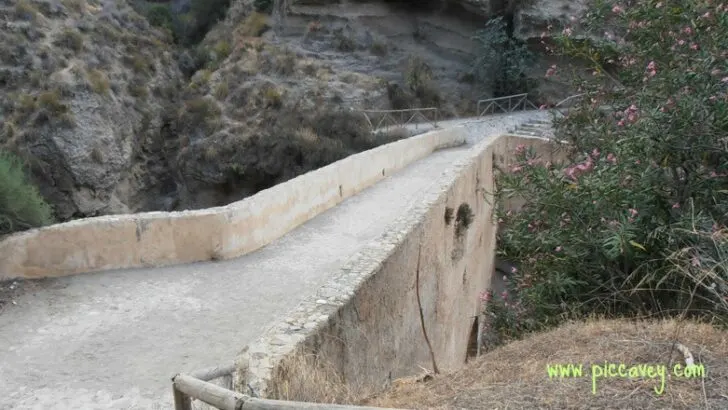

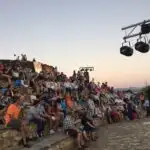

Esta mañana estuve allí. Gracias por la información. Muy interesante.
Es un lugar con mucha historia, aunque ahora no se pasa tanto por alli.
Me alegro que fue de utilidad mi post.